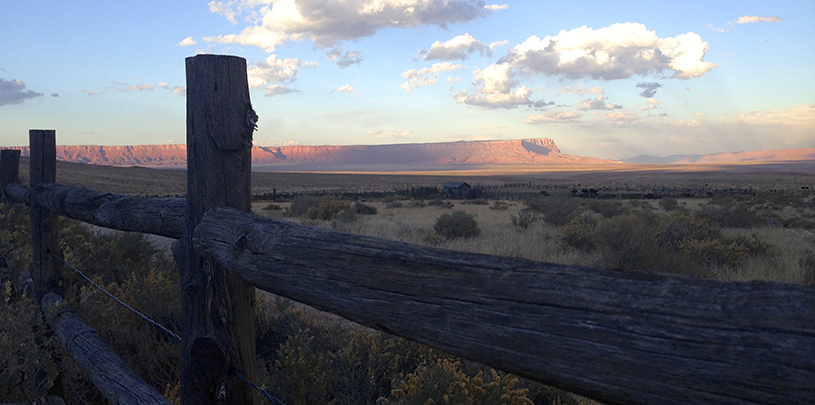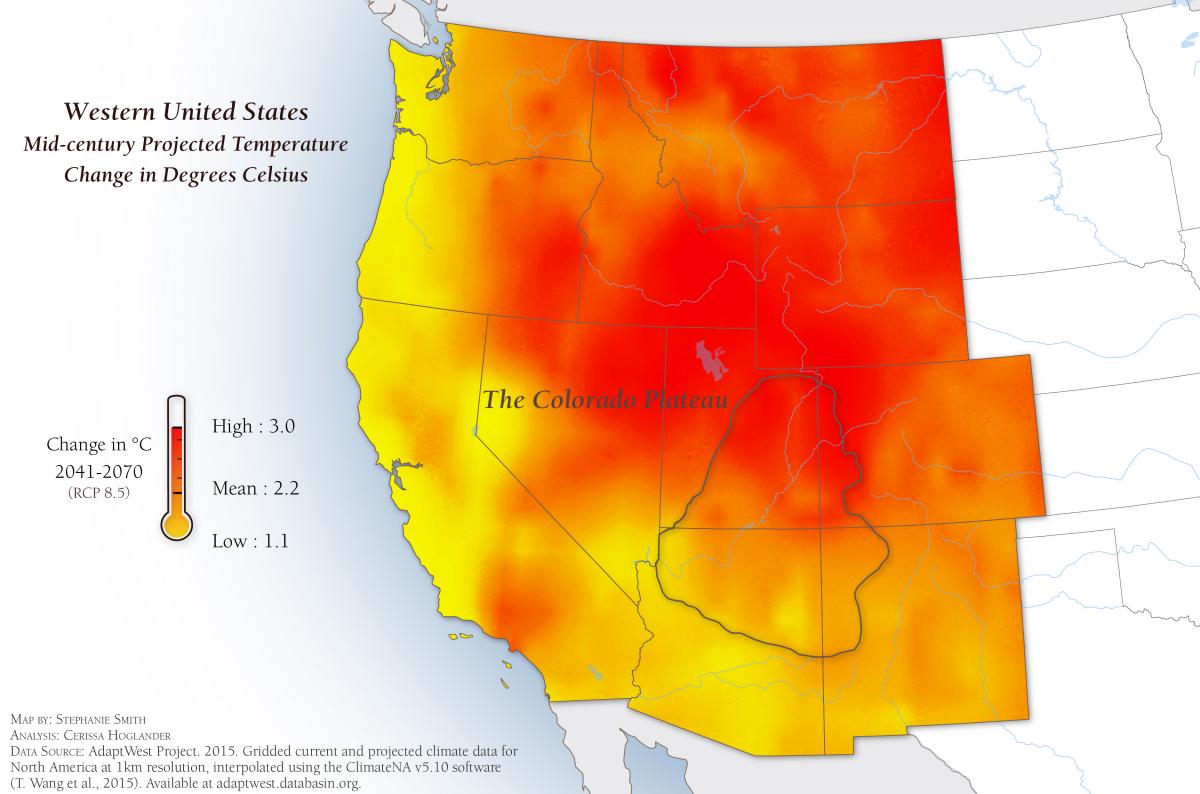
 by Ed Grumbine, Lands Director
by Ed Grumbine, Lands Director
Those of us fortunate enough to live in northern Arizona know how lucky we are—we have an abundance of green forests, high mountains, clean air, clear water, and room enough to share this wild bounty.
However, change is on the wind. Scientists agree that the Colorado Plateau—an already arid region—will become a much hotter and drier place throughout the rest of the 21st century.
So we ask: what do we need to know about our changing climate to help us adapt into the future?
In the spirit of understanding and adjusting to change, the Grand Canyon Trust has produced a climate change adaptation plan for the North Rim Ranches, where we hold permits to graze livestock on about 830,000 acres of public lands north of the Grand Canyon.
Over the last 10 years, the Trust—working in coordination with our ranching partners, federal agencies, and many academic researchers—has contributed to a wealth of new knowledge about North Rim ecosystems and how to manage them for ecosystem health. But scientists agree that ongoing climate change will challenge livestock practices in these arid grasslands and forests, and livelihoods that depend on grazing will be especially vulnerable.
To meet these challenges, we developed a climate change adaptation plan for North Rim lands. But before we delve into the plan itself, we need to understand what climate change could mean for the Southwest.
We’ve all seen the headlines: “Lake Mead sinks to record low,” “Wildfires set the West ablaze,” “Western drought drags on.” When it comes to climate change, we’re already on the hot seat as reservoirs shrink, river flows trickle, and snowpacks disappear.
Globally, the first 10 years of this century were warmer than any decade since the 1900s. And this trend is continuing. 2015 set a new record for hottest year on record, and so far in 2016, the record is being broken again. All science-based climate projections show temperatures continuing to rise.
Over the coming decades, the Southwest will likely experience some of the greatest climate change compared to the rest of the United States. Average temperatures across our region are projected to increase from 2 to 6 degrees Fahrenheit out to mid-century, with more warming to come. These higher temperatures will deepen current trends toward intensifying drought, with less snowpack, less surface moisture, and increased evaporation.

But as people working on the land know, precipitation is about timing, not just total amount.
Most experts agree that in the future, more winter precipitation will fall as rain rather than snow, and this is already happening in our region. In 20 to 30 years, we may lose almost all winter snowpack.
With water so important for ecosystems and people in our arid homelands, climatic shifts toward increasing dryness will likely lead to more stresses on humans and the land.
The good news is that these transformations will not occur overnight. But, as impacts accumulate over time, they will begin to affect how all of us who reside in the Southwest live, work, and play.
Of course, we will learn how to adapt. Since climate affects everyone, we all share some responsibility to manage our livelihoods as conditions evolve. If we take action today based on proactive planning, we can better promote the ability of the land and its residents to adapt to unprecedented change tomorrow.
In this four-part blog series, we want to introduce you to the climate change adaptation plan for the North Rim Ranches and share some of its highlights.
Over the next few weeks as you peruse this series of posts, we invite you to consider the climate future of the Southwest. We face a host of future challenges, but we have some time to plan, act, and adapt.
Groundwater pumping at a uranium mine near the Grand Canyon will affect the canyon's springs, scientists says.
Read MoreBears Ears petroglyph panels and cultural sites protected by new proposed management plan.
Read MoreFind out how the Bureau of Land Management is planning to protect old-growth forests, creeks, canyons, fossils, and more in Grand Staircase-Escalante National Monument.
Read More